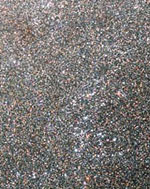
Image credit: Hubble
What appear as individual grains of sand on a beach in this image obtained with NASA’s Hubble Space Telescope are actually myriads of stars embedded deep in the heart of the nearby galaxy NGC 300. The Hubble telescope’s exquisite resolution enables it to see the stars as individual points of light, despite the fact that the galaxy is millions of light-years away.
NGC 300 is a spiral galaxy similar to our own Milky Way. It is a member of a nearby collection of galaxies known as the Sculptor group, named for the southern constellation where the group can be found. The distance to NGC 300 is 6.5 million light-years, making it one of the Milky Way’s closer neighbors. At this distance, only the brightest stars can be picked out from ground-based images. With a resolution some 10 times better than ground-based telescopes, Hubble’s Advanced Camera for Surveys (ACS) resolves many more stars in this galaxy than can be detected from the ground.
A ground-based Digitized Sky Survey image of the full field of NGC 300 is shown in the top left frame. An outline of the Hubble Heritage ACS image is marked and shown in the image in the top right frame. A detailed blowup of this image (in the bottom frame) shows individual stars in the galaxy. A background spiral galaxy is visible in the lower right corner. The individual Hubble ACS exposures were taken in July and September 2002.
Original Source: Hubble News Release
